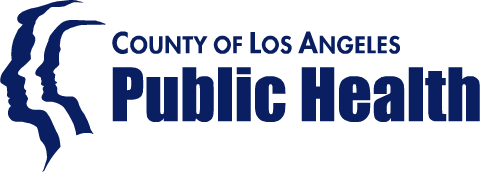Eaton Fire Recovery & Environmental Safety Resource Center
Last updated: April 2025
This page outlines the full debris removal process, environmental health updates, soil testing results, and post-fire rebuilding considerations. It is maintained with the most current information available from LA County agencies, the Army Corps of Engineers, the EPA, and community-led town halls.
Debris Removal Program Overview
The Eaton Fire cleanup process is a coordinated, two-phase operation designed to safely clear hazardous materials and structural debris from affected properties. The effort prioritizes public health, property safety, and future rebuild eligibility.
Phase 1: EPA Hazardous Material Removal
Managed by the U.S. Environmental Protection Agency (EPA)
Removes: Batteries, chemicals, paints, asbestos, propane tanks, and other hazardous items
Goal: Eliminate toxic risks before excavation
Completed on most parcels in the burn zone
Air Quality Note: Some residents requested additional monitoring near debris staging sites. EPA is reviewing options to expand air testing.
Phase 2: U.S. Army Corps Ash & Debris Cleanup
Applies to destroyed residential structures only
Includes removal of remaining debris, structural materials, and topsoil within the ash footprint
Requires a Right of Entry (ROE) form (deadline was April 15, 2025)
Standard soil removal: Top 6 inches
Important: Additional soil testing is conducted after debris removal. If results show unsafe levels of contaminants (e.g., lead), further soil remediation may be required before rebuilding.
Soil Testing & Environmental Health Update
Soil testing conducted by LA County Public Health has identified elevated lead levels in areas downwind of the fire, including some intact homes.
Soil Testing Results:
Over 4,000 samples collected from 780 parcels
Up to 47% of samples exceeded California’s lead screening level of 80 mg/kg in certain neighborhoods (e.g., Normandie Heights)
Arsenic, PAHs, and dioxins were detected, but at levels consistent with natural background
Next Steps:
A $3 million motion is under review to fund free or low-cost soil testing for both destroyed and intact homes
Homeowners may request private testing for areas beyond the initial cleanup footprint
Gardening & Landscape Safety:
Avoid planting edibles in untreated soil
Use raised beds with clean imported soil
Cover bare ground with mulch, compost, or gravel
Wear a mask, gloves and cover skin
Wash hands and produce after gardening
Safe landscaping options include native plants and phytoremediators
Recommended Plants for Soil Recovery:
Phytoremediators: Sunflowers, legumes, mustard greens, comfrey
Native & Drought-Tolerant Plants: California poppy, toyon, yarrow, purple sage, deergrass
Helpful Weeds (Natural Soil Stabilizers): Mallow, mustard, filaree
Tree Removal, Markings & Appeals
FEMA and the Army Corps are evaluating and marking fire-damaged trees based on projected safety hazards over the next five years.
Tree Risk Markings:
❌ High Hazard Trees: White "X"
⩵ Medium Hazard Trees: White "="
Low Risk: No marking
White 'T': Property entrance assessment
Tree Removal Notes:
Only FEMA-approved hazardous trees will be removed
Homeowners can request reassessment or appeal markings
Some removals occurred before residents were notified; improved communication is in progress
Infrastructure Recovery & Transport Impacts
Fire-Impacted Zones:
New fire hazard maps may affect future building codes
Rebuilding may require fire-resistant designs and defensible space compliance
Debris Transport Routes:
Main Routes: New York Drive, Altadena Drive, Lake Avenue
Community Concerns: Increased dust, noise, pedestrian safety risks
Mitigation: Dust control measures in place; real-time air monitoring under review
Insurance, Cost, and Rebuilding Guidance
Debris Removal Costs:
Free for uninsured residents of destroyed homes
Insurance-billed if policy includes debris removal coverage
Documentation Required: Save all receipts related to private cleanup
If You Missed the ROE Deadline:
Late ROE applications may be accepted on a case-by-case basis
Contact LA County Recovery Hotline for assistance: (844) 347-3332
Out-of-Pocket Preconstruction Costs:
Most homeowners will need to pay up front for:
Soil/geotechnical testing
Structural evaluations
Building permit applications
Frequently Asked Questions (FAQ)
General Program Questions
Q: Is debris removal free for everyone?
A: Yes, if your home was destroyed and you're uninsured. Otherwise, your insurance may be billed.
Q: What if my home is damaged but not destroyed?
A: You must arrange private cleanup. Public debris removal applies only to total losses.
Q: Can I still sign up for ROE?
A: You may still be eligible. Contact the Recovery Hotline for updated guidance.
Soil Safety & Gardening
Q: Can I plant in the ground again?
A: Yes—but not food crops unless soil tests show it is safe. Use raised beds or stick to non-edibles for now.
Q: Are there safe plants I can use?
A: Yes! Native plants and phytoremediators help stabilize and even restore soil.
Q: What about my kids and pets?
A: Keep them off bare dirt. Use mulch, grass, or paving to reduce contact.
Tree Evaluation
Q: How are trees marked?
A: High = "X" | Medium = "=" | Low = No Mark. Entrance = "T". You may request a review.
Q: Can I appeal a tree removal?
A: Yes, homeowners can ask for reassessment if they disagree with markings.
Water & Air Quality
Q: Is my water safe?
A: Public water systems show no contamination. Private wells should be tested.
Q: What about the air near cleanup trucks?
A: Additional dust control has been added. EPA is reviewing requests for more air quality monitoring.
Stay Informed & Get Support
Recovery Hotline: (844) 347-3332
Sign Up for Debris Removal: recovery.lacounty.gov
Tree Evaluation & Appeals: Contact your LA County Supervisor’s Office
PUSD & School Sites: Updates through Pasadena Unified School District communications
For ongoing updates, town hall announcements, and safety bulletins, please revisit this page or connect with your Altadena Town Council representative.





